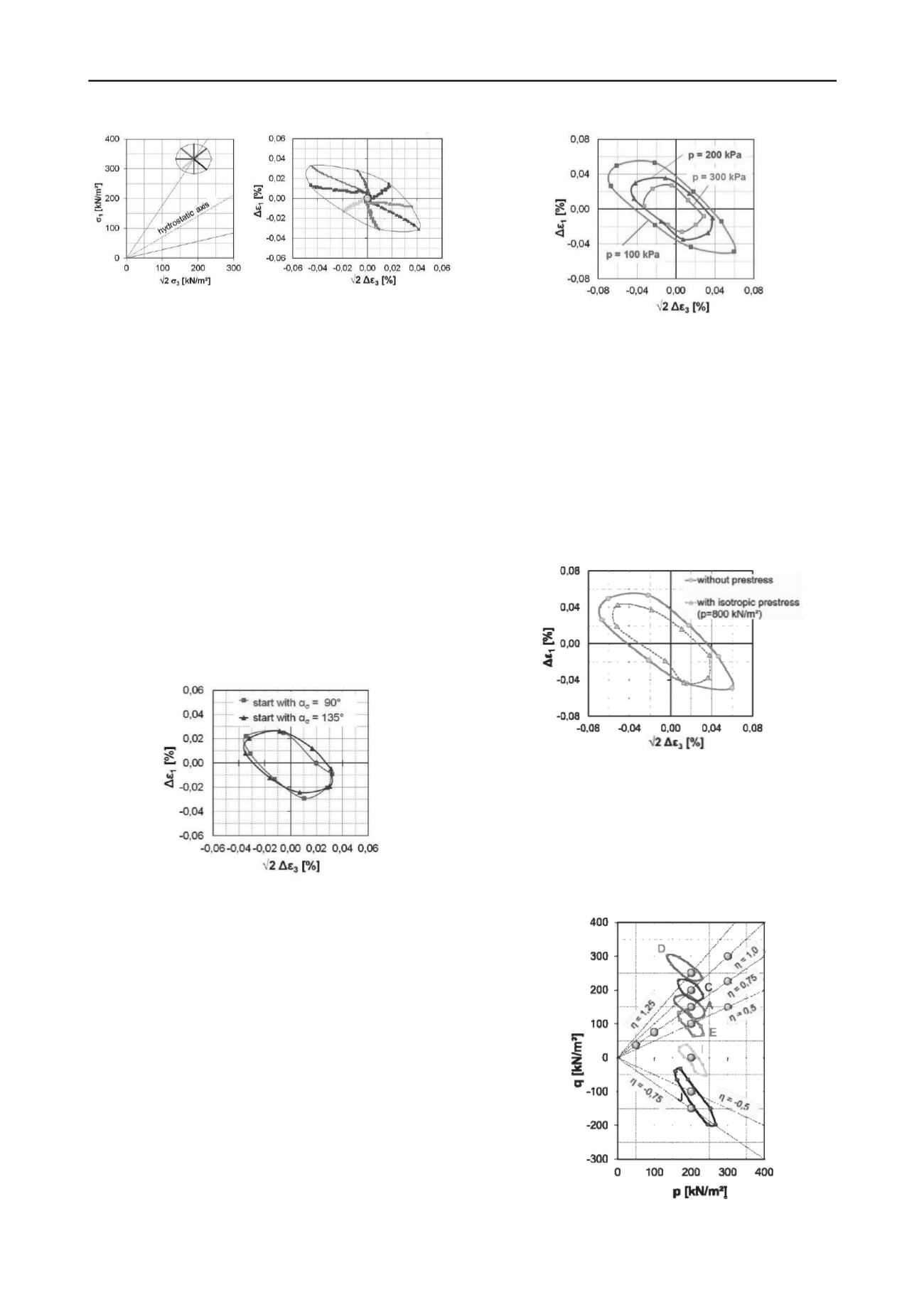
1493
Technical Committee 203 /
Comité technique 203
Figure 3: Construction of the strain response envelope
a) application of Δ
= 50 kN/m²
b) strain responses for
in 8 different directions
all 8 directions
The envelope of the strain-responses tends to have the shape
of an ellipse. The highest absolute values of quasi-elastic strains
always occur in the directions α
σ
= 135° and α
σ
= 315°; the
smallest absolute values result from directions α
σ
= 45° and
α
σ
= 225°.
The investigation of the influence of the sequence of the
directions, the mean pressure p, a monotonous isotropic
prestress and the stress-ration η on the shape, size and
inclination of the response-envelope, i.e. the direction-
dependent quasi-elastic stiffness, is described in the following.
3.3
Different sequence of stress paths
To investigate the influence of the sequence of the applied
stress-paths on the quasi-elastic strain-responses, the testing
procedure described in section 3.2 was applied for different
sequences of directions α
σ
. The rotational direction was also
varied and carried out clockwise and counter clockwise. It is
found, that – for the investigated initial stress-states – neither
the sequence nor the rotational direction of the applied stress-
paths leads to a substantial influence on the strain response
envelopes, figure 4.
Figure 4: Response envelopes due to Δ
= 50 kN/m² for 2 different
sequences of stress-paths from the same initial stress-state
Further test are carried out which seem to confirm these
results.
3.4
Stress-dependent stiffness
To investigate the stress-dependency of the quasi-elastic
stiffness at low cycle loading tests at 3 different initial stress-
states with a constant stress-ratio η and varying mean pressure p
were performed. The quasi-elastic strains due to a stress
increment Δ
= 50 kN/m² were determined and plotted by
means of response-envelopes, figure 5.
Figure 5: Comparison of response-envelopes due to Δ
= 50 kN/m² for
3 different mean pressures p and constant initial stress-ratio η = 0,75
As shown in figure 5 the size of the ellipses decreases with
increasing mean pressure p. This means that the stiffness
increases. This is especially evident at the stress-paths α
σ
= 135°
and α
σ
= 315°. The influence of p on the elastic moduli at the
directions α
σ
= 45° und α
σ
= 225° is much lower.
3.5
Isotropic prestress
To examine the influence of a static isotropic preloading on the
size and shape of the quasi-elastic response-envelopes, different
tests were carried out starting at the same stress point with and
without preloading.
It seems that the influence of an isotropic preloading is
negligible, figure 6.
Figure 6: Response-envelope due to Δ
= 50 kN/m² with and without
prestress
Similar observations were made when applying an
anisotropic preloading.
3.6
Anisotropy
To investigate anisotropic material properties, tests were carried
out for p = const. and different initial stress-ratios
. The
resulting envelopes are plotted in the p-q-plane, figure 7.
Figure 7: Rotation of axes of the response-envelopes depending on the
stress-ration


